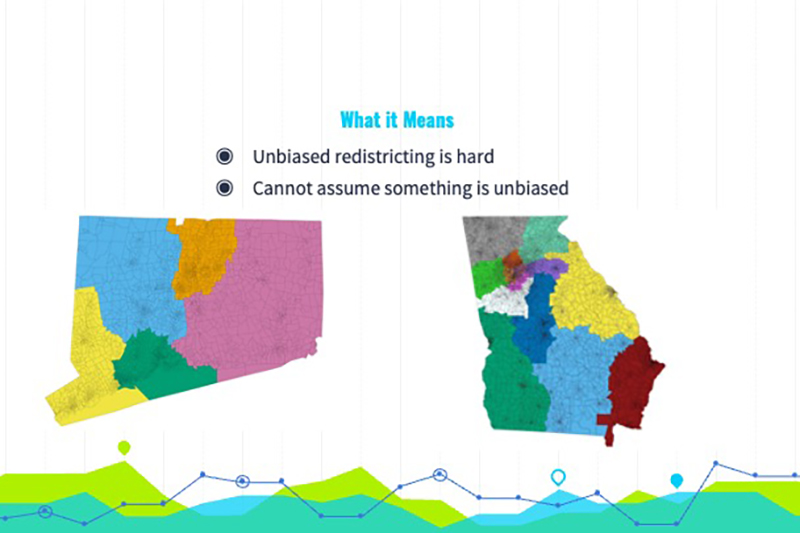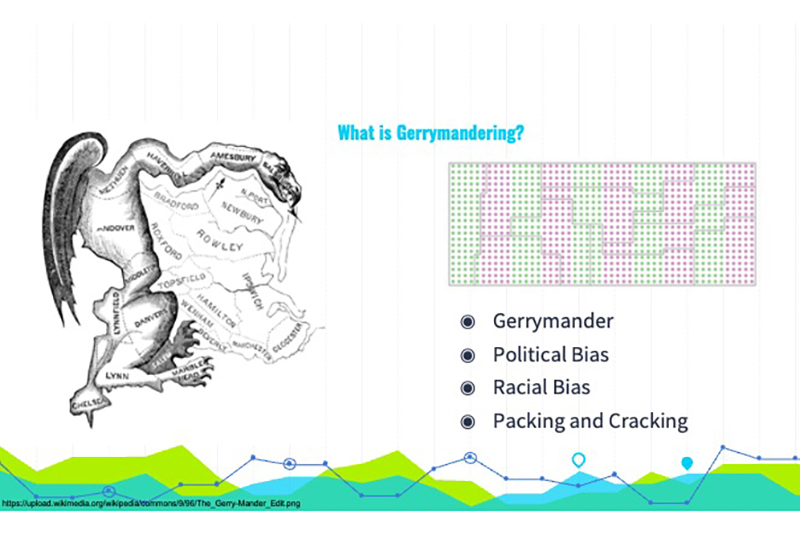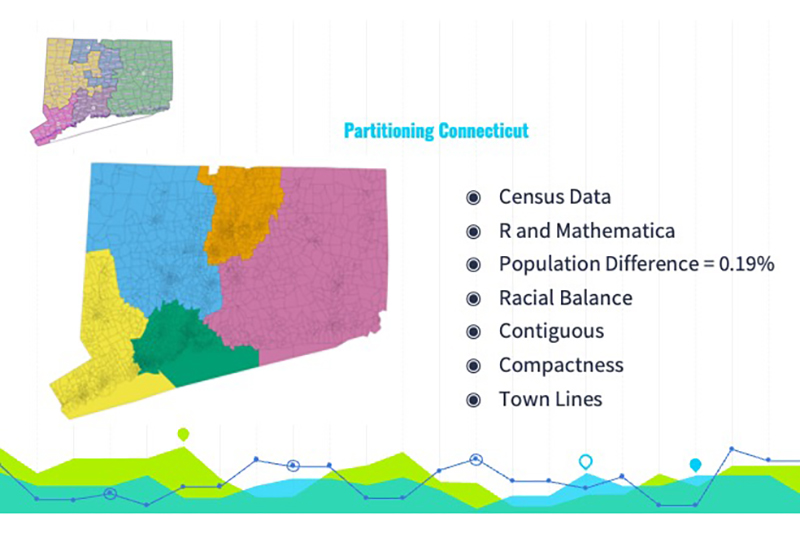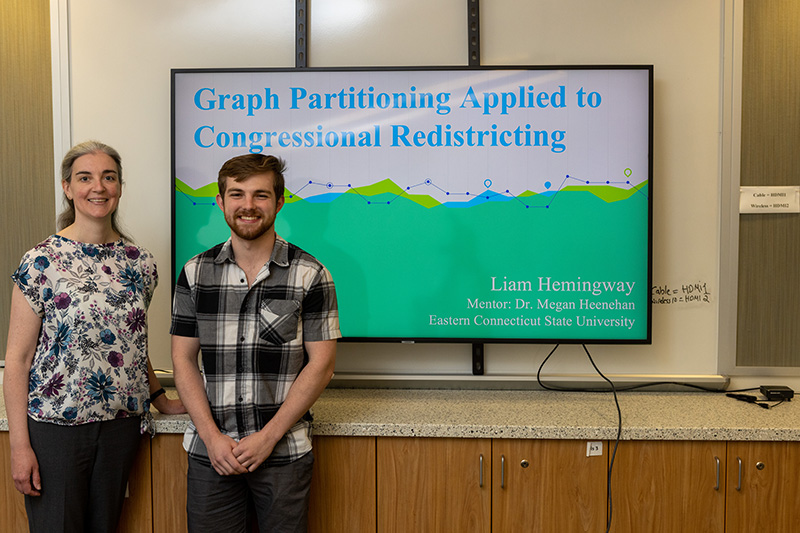- Apply
- Visit
- Request Info
- Give
Eastern student wins math conference prize for research on gerrymandering
Written by Lucinda Weiss
Published on May 15, 2023
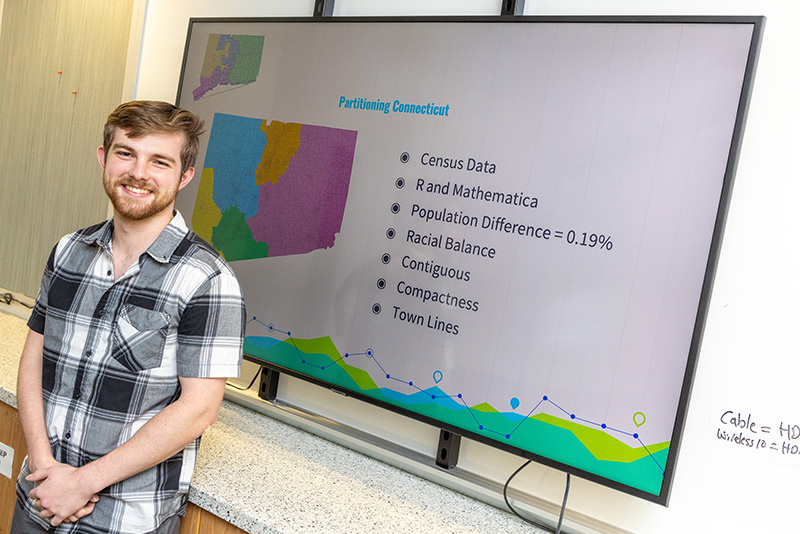
Eastern Connecticut State University senior Liam Hemingway won a top prize at a national conference for his applied math research that looked for a way to draw unbiased congressional districts. In the process, he learned that gerrymandering, or drawing partisan districts, can happen even when you divide a state solely by population.
Hemingway won the spring 2023 Council on Undergraduate Research Mathematical, Computing and Statistical Division student award at the recent National Conference on Undergraduate Research (NCUR) at the University of Wisconsin-Eau Claire. His research, presented there and at Eastern’s CREATE conference and at a Northeastern Mathematical Association of America meeting in New Hampshire, used graph theory to create fair congressional districts.
Hemingway looked at two states: Connecticut and Georgia. Connecticut is considered fairly free of gerrymandering, while Georgia’s districting map is considered to be biased in favor of Republicans. One of the goals of his study was to make “compact” districts, as the law recommends, so that the maps would look more “blobby” and less “snaky” than highly gerrymandered maps.
“They don’t want people to make these snakelike maneuvers,” he said, referring to the distorted districts that gerrymandering can produce.
In Connecticut’s case, a couple of sharp hooks were rounded out, but the new map didn’t change the political balance of the state’s five congressional districts. In Georgia, however, the result was an even more partisan map. The algorithm that Hemingway used compacted districts in a way that consolidated Democrats in urban areas, resulting in less representation than they have now, even though the parties aren’t that far apart in how many people claim affiliation with them statewide.
“You could unintentionally make something that’s more biased,” said his faculty mentor, Professor Megan Heenehan, acting department chair for mathematical sciences.
Adjustments would be needed in further research to account for urban areas attracting more Democrats and rural areas being more Republican, Hemingway noted. “It was beyond the scope of this project,” he said, but “it gives you ideas of what you could change to take it further,” he said.
Hemingway’s work in math and statistics has gained him admission to a top statistics graduate program at Iowa State University, where he will have a teaching assistantship and will work toward a Ph.D. He’s not sure of his research area there yet, he said, “but this is definitely an option.”



